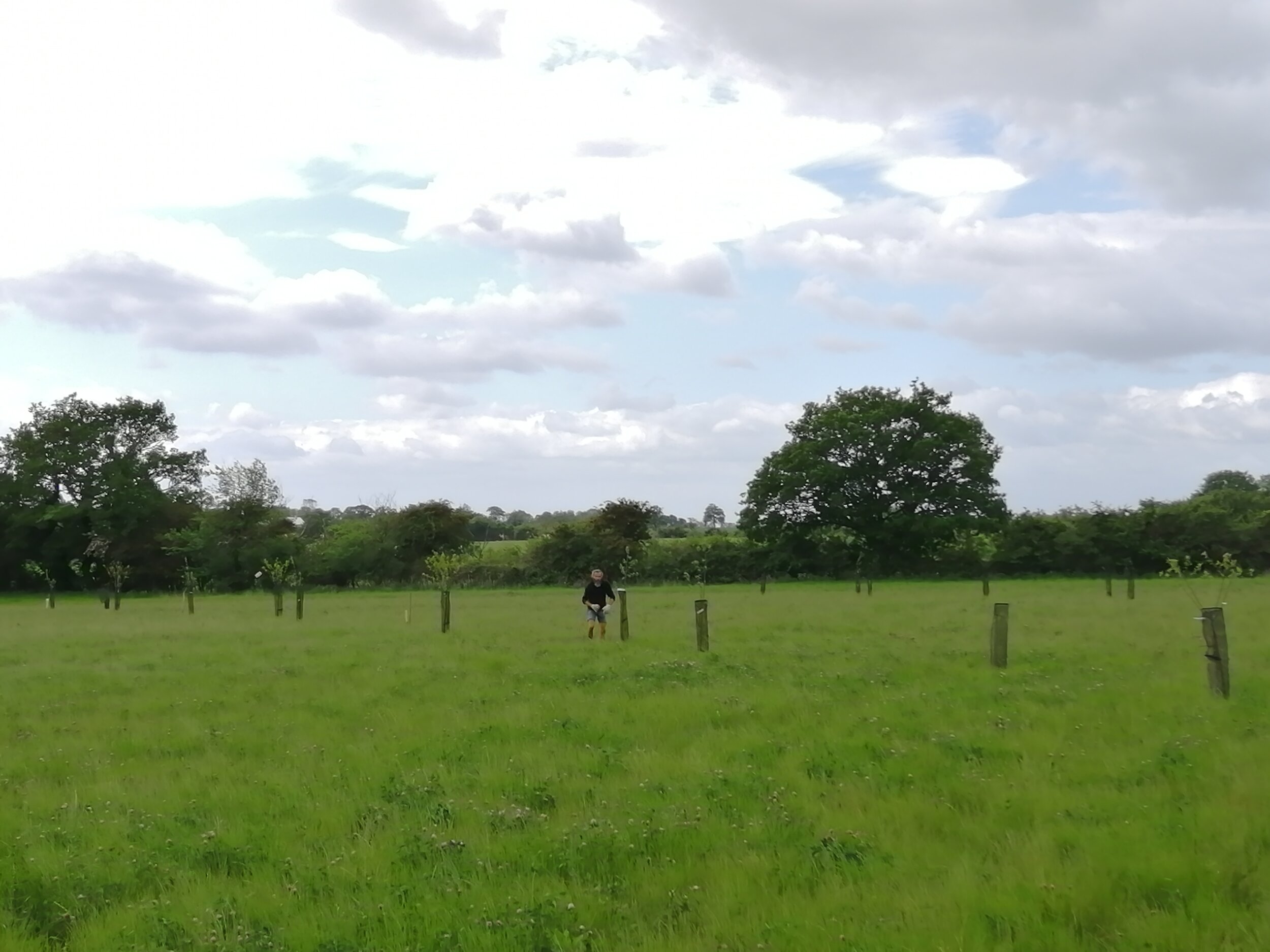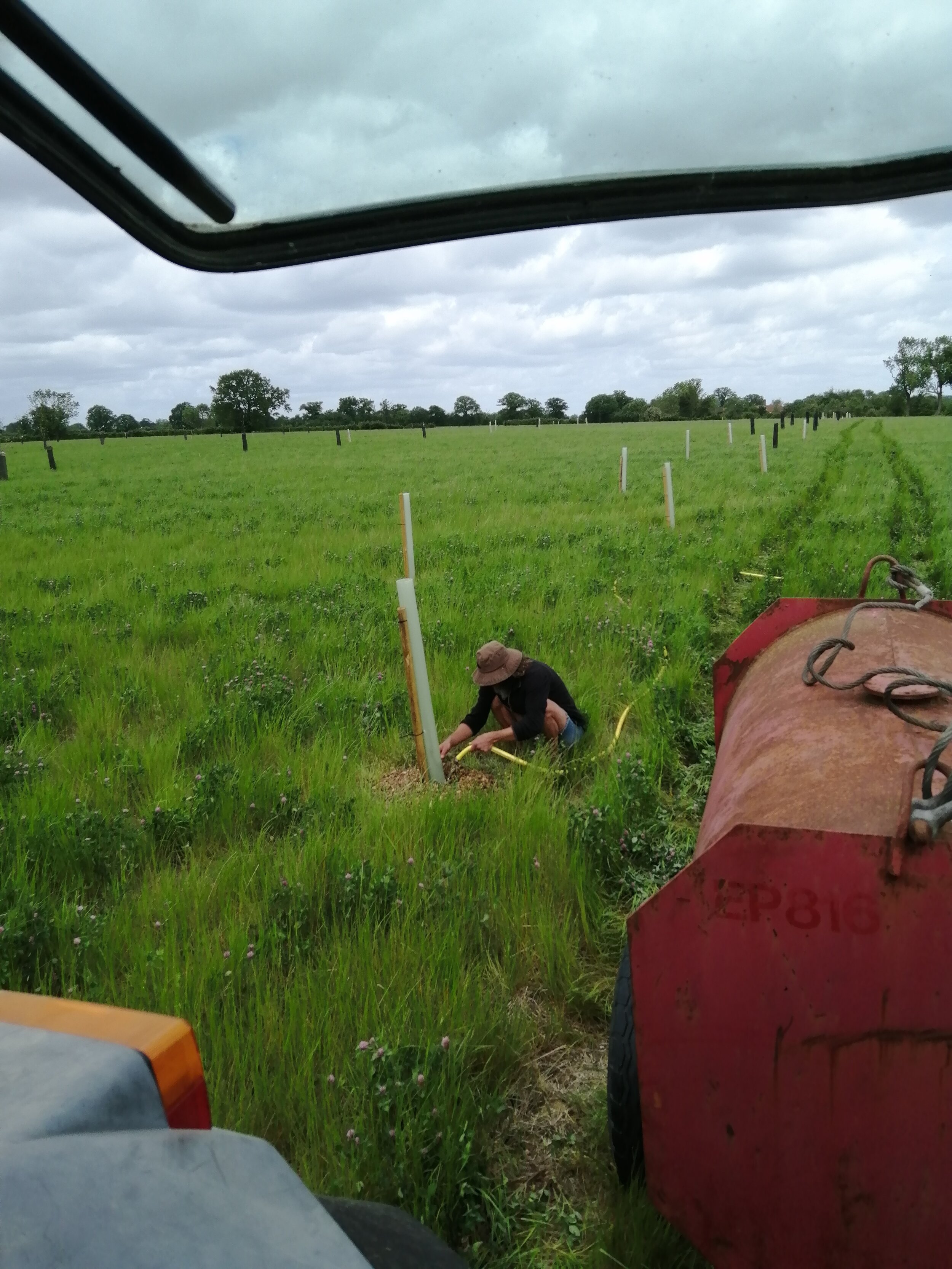
Agroforestry and cereals
Our ethos is to find ways in which to enhance and invite more biodiversity and wildlife onto the farm. Agroforestry offers a means for creating multiple field breaks and it is within and along these avenues that wildlife can flourish, whilst the whole system also benefits through increased nutrient cycling, reduction in wind speeds, more balanced water management, natural predators and, of course, the trees may even provide a wonderful yield one day! We have shared our illustrated planting plan on the page below. We received our trees very late in the planting season and then suffered a long drought, we watered them and a good number made it through year one (‘21 marks year 2) but in hind sight we would have planted earlier in the season. Deer have also been very destructive and plastic mesh has not worked, indeed no plastic guards are likely to work well.
When we learnt that the flour in our bread s made from highly uniform wheat varieties that are the product of a heavily industrialised food system and that prior to this there were a multitude of distinct landraces which were genetically diverse and honed to the characteristics of the farms terroir, our curiosity was naturally aroused. Combined with this, such plants had existed for thousands of years in low input, completely organic systems, whilst the modern organic wheats were those same types which had been designed for heavy input farming but certified organic. A big shift happened when we visited Per Grupe at his farm near Copenhagen and saw all of the fantastic grains he was growing, he also milled them for us and invited us to bake with him, yes, the guy is a hero. He was happy to send us a couple of varieties he has grown. One, Lys Brun has become a kind of house flour at e5, is composed of several old tall straw wheats and is stunning to look at in the field. The other, Olande, is another heritage Danish wheat which is well revered by Scandinavia’s leading bakeries and we find we are having good results also with it. We area ably assisted on the farm by Paul and Martin of Durie farm who are progressive organic farmers and we are working with them on a transition across our farms to minimum soil disturbance and strip tilling whereby rows of cover crop remain in the ground between the rows of the crop thereby allowing continual root presence in the soil facilitating more nutrient exchange.


